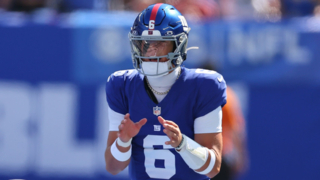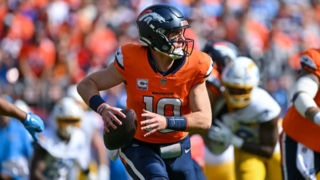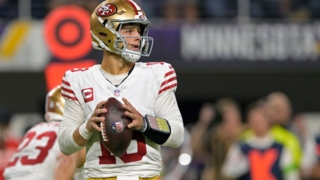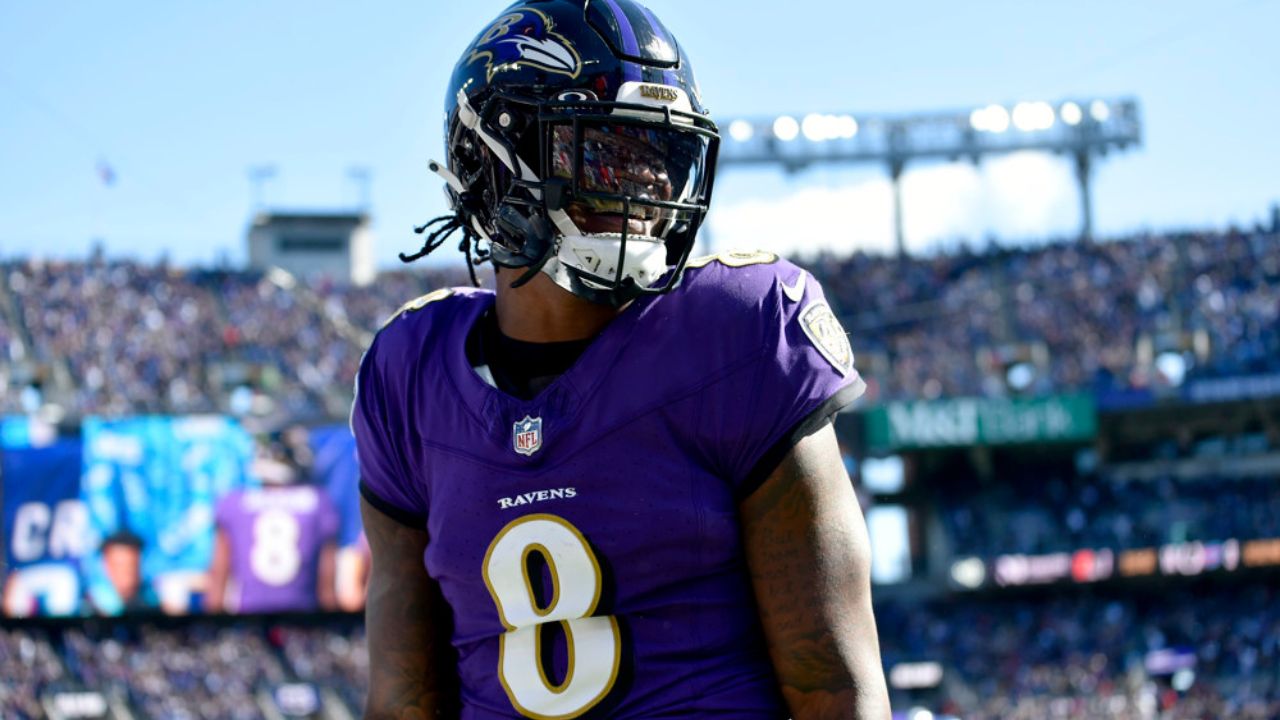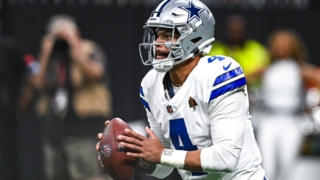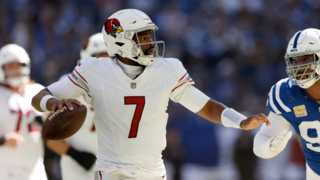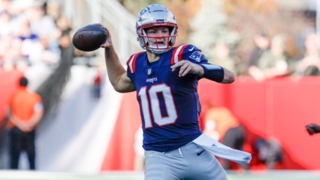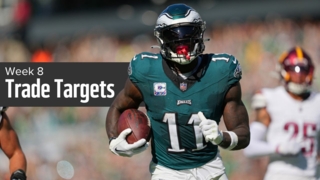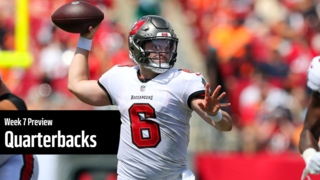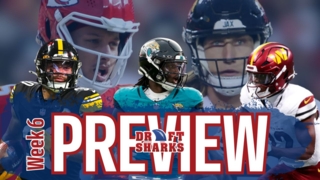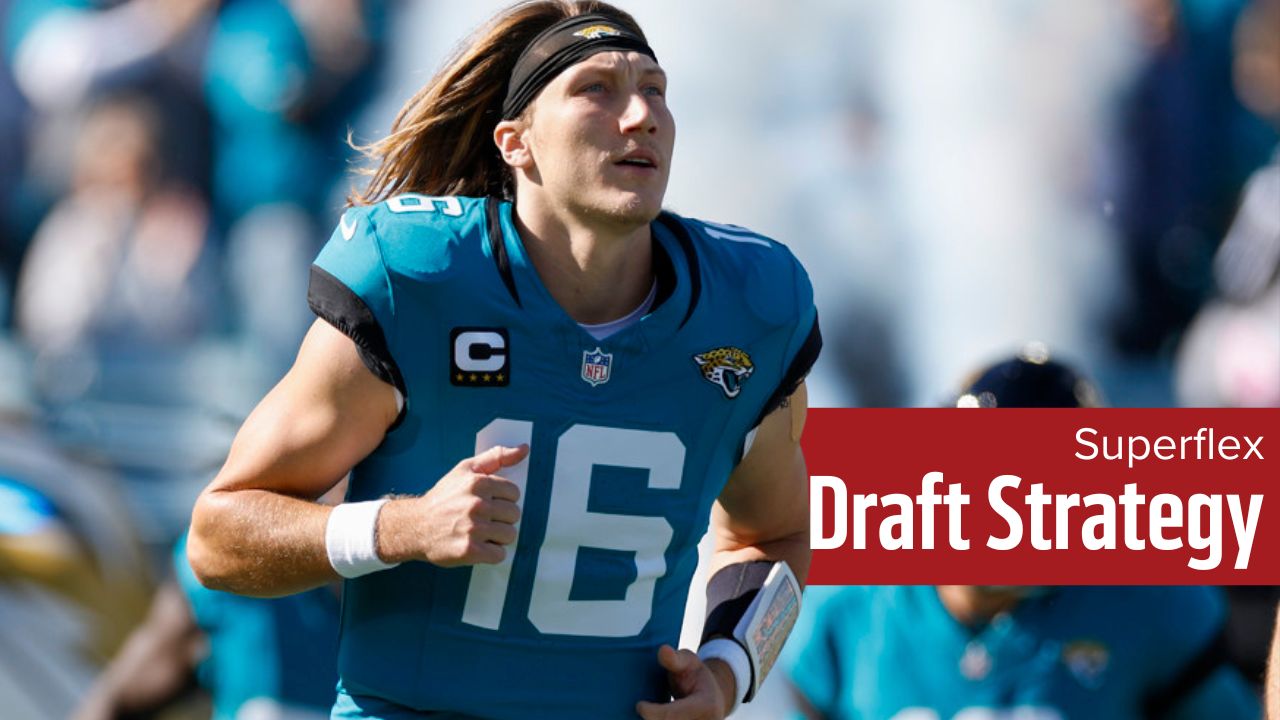Elite QB or Two Late Stabs? Your QB Draft Strategy Starts Here

When should you draft a QB?
Deciding when to select a QB in your draft can make or break your fantasy team.
Should you opt for an elite option such as Lamar Jackson or Jayden Daniels?
Or is a late-round QB strategy better?
What about in a Superflex league?
Let’s dive into QB draft strategy and how to find the perfect upside QB.
Importance of QB Rushing
Finding that Konami Code QB who offers rushing upside often gives you an advantage over other managers.
At the very least, your starting QB needs to be able to scramble for yards and TDs when opportunities arise.
Of course, most drafters are catching up with this line of thinking, but they still aren’t valuing rushing enough.
Since 2019, the overall QB1 has scored at least 4 rushing TDs and run for at least 350 yards every year.
Over the past five seasons, top-12 QBs have averaged 360 rushing yards and 4.2 rushing TDs.
Among the 15 top-3 QBs over the past five seasons, nine hit at least 4 rushing TDs. Eight of them hit at least 350 rushing yards.
Your odds of success improve with a QB who can hit these thresholds.
What Do Our Projections Say?
Our QB Rankings show the following QBs projected to hit at least 350 rushing yards and 4 rushing TDs.
| Projected rushing yards | projected rushing tds | |
| Lamar Jackson | 915 | 4 |
| Jayden Daniels | 826 | 6 |
| Josh Allen | 566 | 9 |
| Jalen Hurts | 690 | 13 |
| Justin Fields | 826 | 7 |
We have three other QBs close to those thresholds:
| Projected rushing yards | projected rushing tds | |
| Bo Nix | 372 | 3 |
| Caleb Williams | 374 | 2 |
| Drake Maye | 405 | 3 |
Rushing QBs give you the upside for QB1 games week to week if they can break a big run or score multiple TDs.
They also provide a high-QB2 floor every week due to rushing yards being worth more points than passing yards.
How Many QBs Should I Draft?
It depends on your team structure early in the draft.
If you draft an elite QB such as Lamar Jackson or Jayden Daniels, then heading into the season with only one QB makes sense. You won’t be benching your high-end QB, even in poor matchups. So it's better to take shots on sleeper RBs and WRs in those later rounds.
If you are one of the last teams to take your first QB -- or take a risky QB such as Caleb Williams-- it makes sense to take a backup.
Either approach can have success, so let’s break them down.
TIP
Thinking of keeping a QB? Use our Keeper Calculator to figure out the best keepers for your league
Elite QB Strategy
Taking a high-end QB early in drafts has benefits.
Having an elite weekly starter means you don't need to draft a backup. That saves a roster spot to spend on a sleeper RB or WR late in the draft.
High-end QBs also bring potential for QB1-overall weeks. Players such as Lamar Jackson, Jayden Daniels, and Josh Allen are always a threat to go nuclear.
That said, drafting a QB in the second or third round costs value at other positions.
Opportunity Cost of Top QBs
Here are two possible draft combinations at the end of the second and ninth rounds of a PPR draft:
| Team A | Team B | |
| Second-Round Pick | Josh Allen (375) | Tee Higgins (281) |
| Ninth-Round Pick | Michael Pittman (178) | Justin Fields (318) |
| Total Projected Points | 553 | 599 |
Due to this opportunity cost, we are staying away from most of the early QBs at ADP.
Jayden Daniels and Jalen Hurts offer enough upside at cost to take a chance on and remain slightly undervalued despite drafters recognizing the value of QB rushing.
There is no reason to reach for one above ADP, but if they fall below ADP, we love scooping them up.
TIP
Want a tool that highlights values vs. ADP? You've found it
Late-Round QB Strategy
Drafting multiple upside QBs later in your draft can work well.
There are some massive benefits to implementing a late-round QB strategy.
Savvy fantasy players can leverage strong matchups to get QB1 production from a QB2 in a given week.
We generally see a late-round QB or two break out from later draft positions (Jayden Daniels in 2024, for example).
Waiting on QB allows you to take two shots on finding a specific sleeper and getting QB production cheaply.
The largest benefit is being able to strengthen the top of your roster. While some of your league mates will draft a QB in the second or third round, waiting until the 10th or 11th can boost your RBs and/or WRs.
TIP
Use Upside Mode in the Draft War Room to find QBs with upside late in your drafts
Superflex and 2-QB Leagues
If you can start two QBs, the strategy shifts entirely.
Superflex and 2-QB leagues make the position far more valuable by doubling your potential QB points weekly.
This pushes the position to the top of the draft, making a later-round QB strategy much more difficult.
Strategies can vary, but usually will involve drafting at least one QB early and scooping up your second when the value presents itself.
Even with the added QB starting spot, QBs remain underrated overall in superflex when comparing our rankings to ADP.
TIP
We ran multiple superflex mock drafts to find the optimal QB strategy.
2025 QB Targets
QB values can be found throughout your draft if you plan properly. Other managers may overlook a potential QB1 or weigh an injury too heavily and miss an opportunity.
Check out our fantasy football sleepers if you want even deeper sleeper QBs.
Here are our favorite QBs to target:
Jalen Hurts
Hurts remains one of the best QB values year over year.
We project Hurts as the QB4 overall. ADP has him going nearly two rounds after Lamar Jackson and Josh Allen.
A healthy Hurts should easily surpass the rushing thresholds above. And he boasts some of the best weapons in the NFL.
In 14 full games last season, Hurts averaged 206.5 passing yards and almost 1.3 passing TDs per game. He averaged 42.2 rushing yards and 1 rushing TD per game.
The rushing production fueled seven top-5 fantasy finishes and four others inside the top-12.
Last year, Hurts tied for the second-most carries inside the 5-yard line with 18 and had 28 carries inside the 10.
Even with Saquon Barkley in the backfield, the Eagles leaned on Hurts rushing near the end zone. The “Tush Push” staying alive for this season should allow that trend to continue.
Hurts rushing creates a safe floor, but also gives him QB1 overall upside. His 25.5 passes per game from last season were worrisome, but he topped that number over the past few years when AJ Brown, DeVonta Smith, and Dallas Goedert were healthy.
Hurts easily could slide into more passing once again.
Justin Fields
Fields currently sits outside the top 12 QBs in ADP, but should smash the rushing thresholds above.
Last year while starting for the Steelers, Fields ranked seventh in QB scrambles through Week 6. His mark of 18 was only three away from tying Deshaun Watson for second.
Fields also ranked fourth in QB carries and rush yards over that span and sat first in rush TDs.
In games where he’s played 90% of the snaps, Fields has totaled the following rush attempts per game:
- 2024: 9.2
- 2023: 8.9
- 2022: 10.7
- 2021: 6.3
That type of rushing gives Fields a solid weekly floor with a QB1 overall ceiling if he finds the end zone a few times.
Fields will be paired with first-time OC Tanner Engstrand, who served as Lions passing game coordinator the past two seasons. Engstrand’s philosophies are relatively unknown, but the investment in Fields as the starter means building the offense around his skill set.
Fields currently sits underpriced at QB14 according to consensus ADP.
Trevor Lawrence
Lawrence doesn’t fit the rushing minimums we explored before, but he looks especially good as a later-round target.
New HC Liam Coen brings a pass-friendly system that helped Baker Mayfield to a QB4 overall finish last season.
On top of that, the Jaguars invested the second overall pick in WR Travis Hunter, adding a high-upside weapon alongside Brian Thomas Jr.
And the QB has reached 334 rushing yards and 4 TDs twice each through four seasons. So he could hit those thresholds with a healthy campaign.
Lawrence currently sports a QB20 consensus ADP despite finishing the last three seasons as QB13, QB16, QB13 in points per game.
He should outperform his current ADP at the very least, and gives you top-12 upside with the best situation of his career.
Get the ULTIMATE Guide For Your Draft
We're happy to give you tips leading up to your draft. But fantasy football drafts NEVER go as expected.
Your Draft War Room syncs directly with your league. So it knows your settings going in.
And as you draft, it knows who you've taken, what's left, and who's likely to get back to you. Those are just a few of the 17 value indicators measured for EVERY pick recommendation.
Check out this video to learn more about the industry's most powerful draft tool ...
Draft using the best dynamic tool in the industry. Our fantasy player valuations (3D Values) change during your draft in response to...
- Exact league settings - direct sync
- Opponent and Team Needs
- Positional scarcity & available players
- Ceiling, injury risk, ADP, and more!
You need a dynamic cheat sheet that easily live-syncs with your draft board and adapts throughout your draft using 17 crucial indicators.
Get your Draft War Room Today
 Redraft
Redraft Dynasty
Dynasty Best Ball
Best Ball
